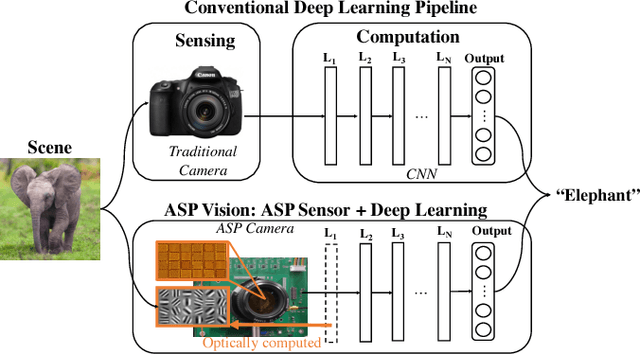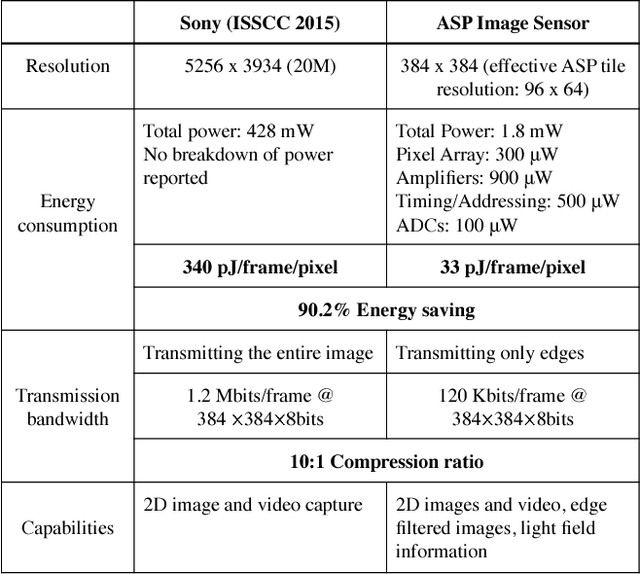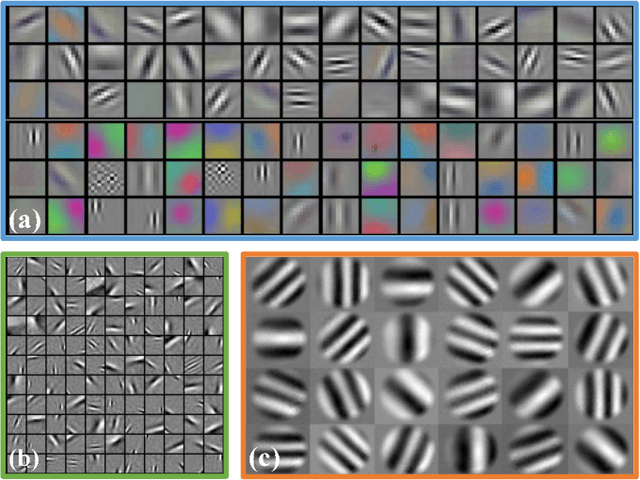Judy Stephen
ASP Vision: Optically Computing the First Layer of Convolutional Neural Networks using Angle Sensitive Pixels
Nov 16, 2016



Abstract:Deep learning using convolutional neural networks (CNNs) is quickly becoming the state-of-the-art for challenging computer vision applications. However, deep learning's power consumption and bandwidth requirements currently limit its application in embedded and mobile systems with tight energy budgets. In this paper, we explore the energy savings of optically computing the first layer of CNNs. To do so, we utilize bio-inspired Angle Sensitive Pixels (ASPs), custom CMOS diffractive image sensors which act similar to Gabor filter banks in the V1 layer of the human visual cortex. ASPs replace both image sensing and the first layer of a conventional CNN by directly performing optical edge filtering, saving sensing energy, data bandwidth, and CNN FLOPS to compute. Our experimental results (both on synthetic data and a hardware prototype) for a variety of vision tasks such as digit recognition, object recognition, and face identification demonstrate using ASPs while achieving similar performance compared to traditional deep learning pipelines.
 Add to Chrome
Add to Chrome Add to Firefox
Add to Firefox Add to Edge
Add to Edge